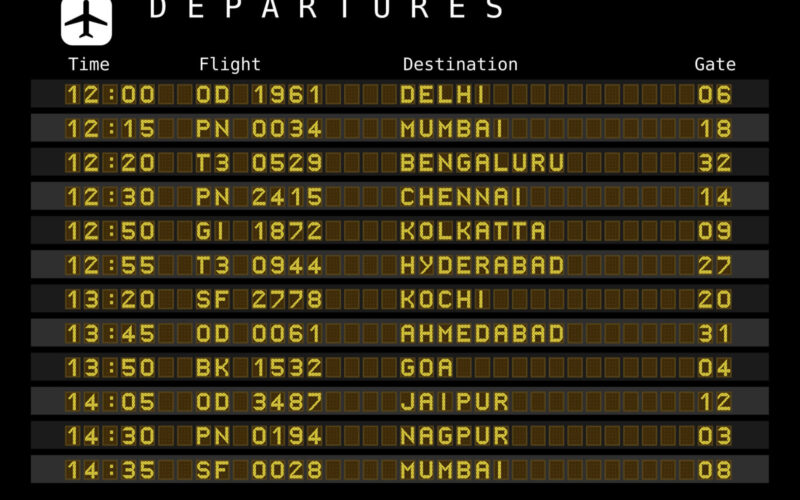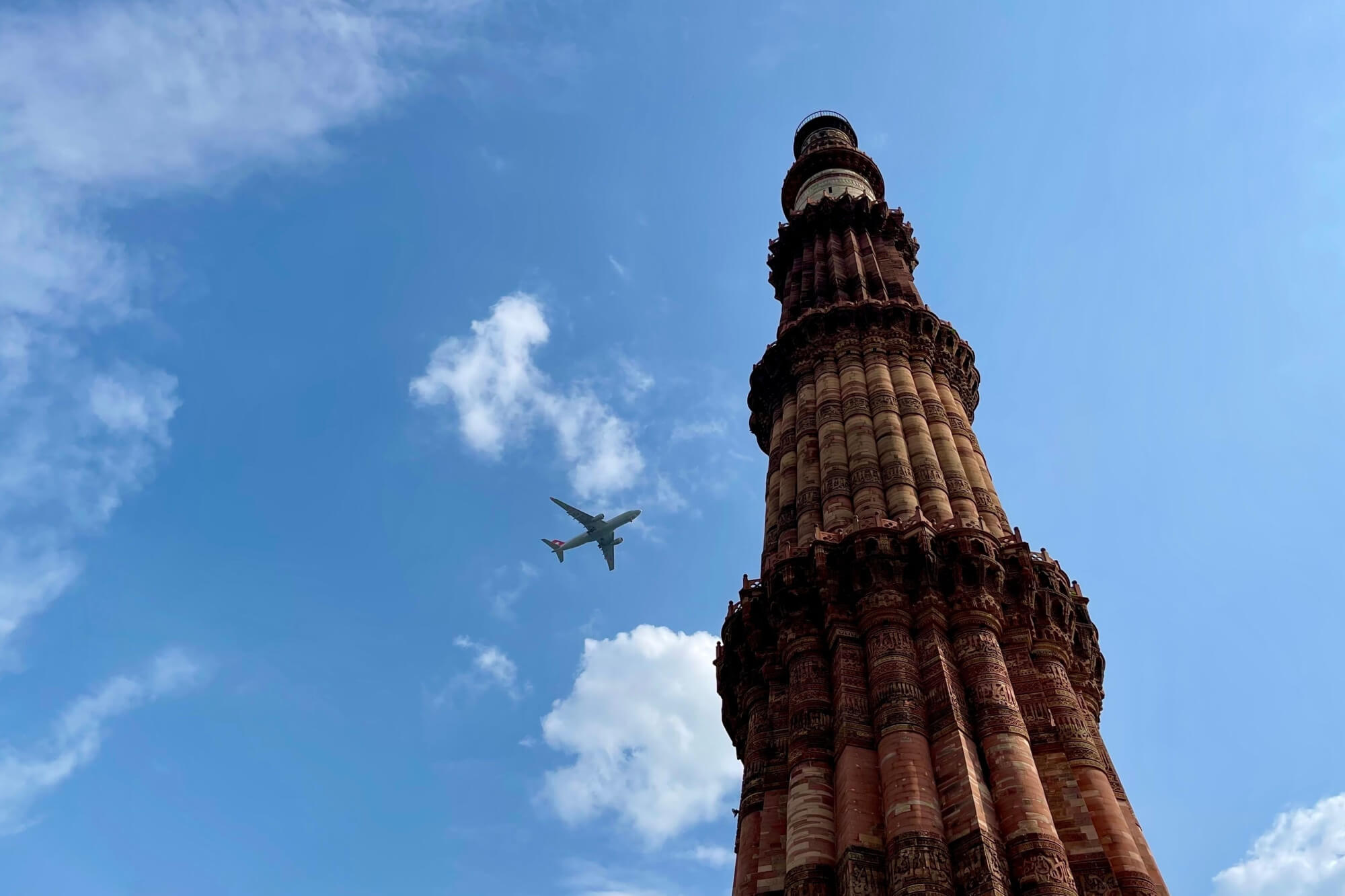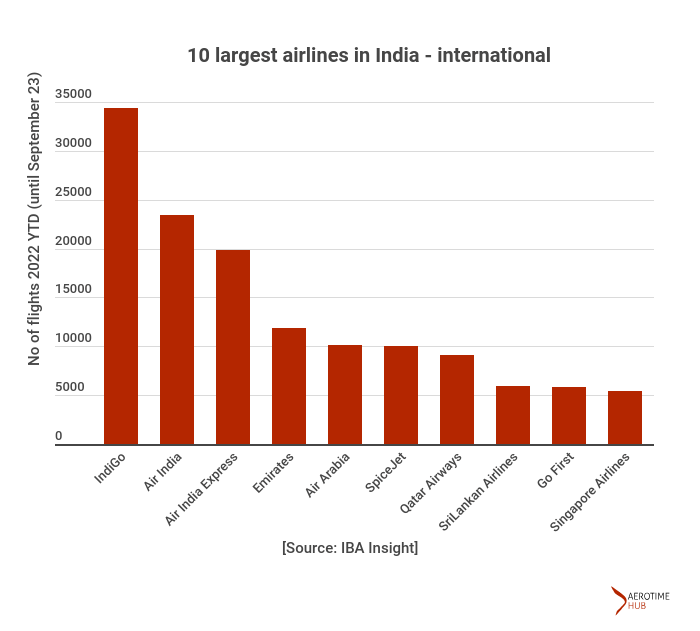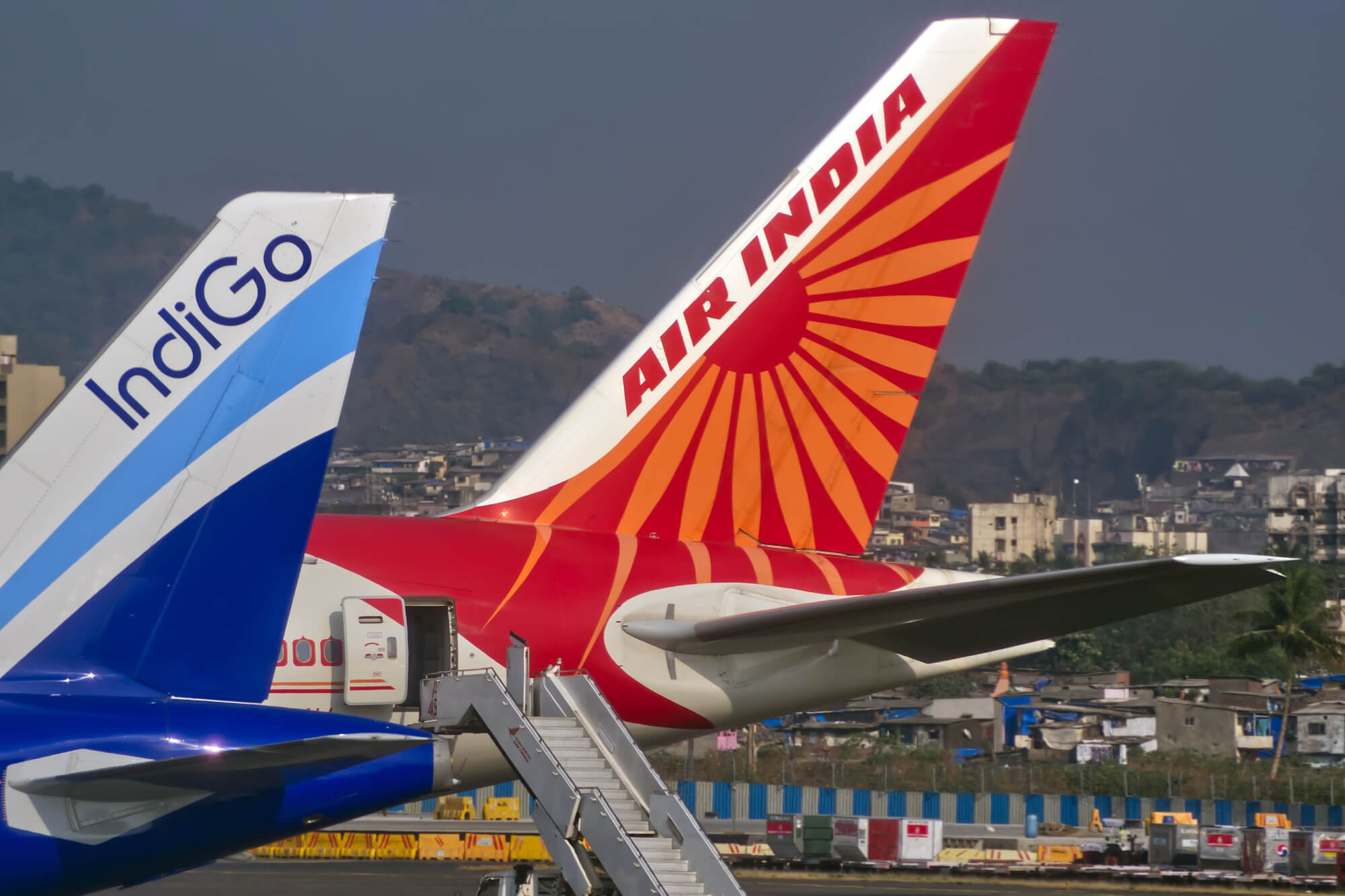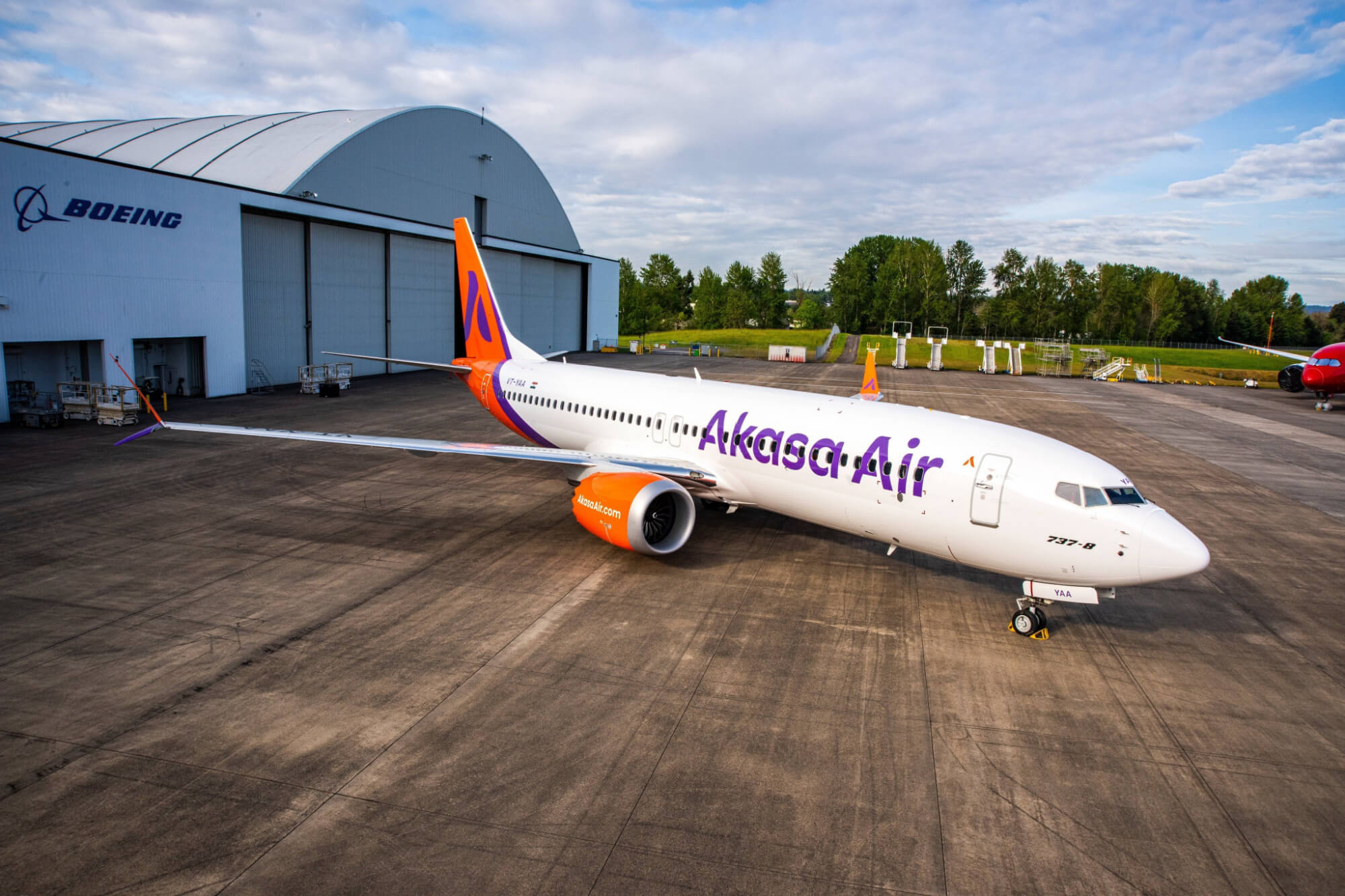Commercial aviation in India is undergoing a major shake-up this year. IndiGo continues to lead the market as the country’s biggest carrier, but Air India has new owners, start-up Akasa Air has launched with a fleet of 737 MAX aircraft and Jet Airways is on the verge of a relaunch.
Meanwhile Hans Airways and flypop, both based in the UK, are hoping to take advantage of predicted growth in Indian air travel by aiming to link Britain with mid-tier cities in India.
AeroTime takes a look at the latest developments in India.
How big is the market?
In 2019, 200 million passengers traveled by air in India. Not much for a country with over 1.3 billion people.
Neil Fraser, Manager of Airline Analysis, at aviation data, intelligence and advisory company IBA, told AeroTime that a long-standing issue with the Indian market has been that the population never had enough disposable income to fly regularly. “Whilst India overtook the UK economy in size for the first time in September 2022, GDP per capita is long behind,” he noted.
However, the country’s aviation minister Jyotiraditya Scindia has predicted passenger numbers will double to 400 million within the next four years. In fact, the country has already seen phenomenal growth, with only 60 million passengers traveling by air in 2013-14.
At an event for the inauguration of Akasa Air’s first flight on August 7, 2022, Scindia enthused about the transformation of the Indian air travel market, praising the “foresightedness” and “zeal” of prime minister Narendra Modi for helping to democratize civil aviation.
“Earlier, this industry was considered for the elite” he was quoted as saying by the Hindustan Times. “His dream, his vision – that a person wearing slippers can also fly in a plane – has led to a transformation of this sector in the last eight years in terms of affordability, accessibility and inclusion as we have never seen before.”
An aircraft flies over the Qutub Minar tower. Credit: Somphop Krittayaworagul / Shutterstock.com
Independent aviation analyst Brendan Sobie, the founder of Sobie Aviation, said the growth of the Indian market could be compared to China’s fast growth in recent years and it could be the growth story of the next decade.
“I would say that India is a market of massive potential,” he told AeroTime. “There is room for several expanded or new domestic competitors as the domestic market will continue to grow rapidly. In the international market the outbound segment is on the cusp of potentially very rapid growth that could rival what we saw with outbound China in the decade prior to the pandemic.”
By comparison, Sobie highlighted that China grew to 660 million passengers in 2019 from 292 million in 2011. Within that, it took China six years to grow from almost 200 million passengers in 2008 to almost 400 million in 2014, which is similar to the doubling of growth predicted for the Indian market
“Look at the number of Chinese carriers compared to Indian carriers, and you can see there is probably room for more Indian competitors,” Sobie pointed out.
Which are the biggest airlines in India?
IBA shared data on Indian airlines with AeroTime from its IBA Insight aviation data platform, showing the number of flights per operator so far in 2022, up to September 23, 2022.
Credit: AeroTime with data from IBA Insight
Credit: AeroTime with data from IBA Insight
Given the gap between it and its rivals, IndiGo is unlikely to lose its title as India’s largest carrier any time soon. However, there’s a lot of interesting developments among its rivals that we should keep an eye on.
The revamped ones
IndiGo and Air India aircraft. Credit: Anand Balaji / Shutterstock.com
It took several years but finally the Indian government managed to privatize Air India, selling it to the Tata Group in October 2021. It represented a full circle for the airline which can trace its roots back to 1932, when it was known as Tata Airlines.
The acquisition, which was formally completed on January 27, 2022, means Tata Group now has multiple airlines in its possession. Along with Air India and Air India Express, it also owns a 51% stake in Vistara, a joint venture with Singapore Airlines (SIA1) (SINGY), and an 83.67% share in AirAsia India. It is widely expected that Tata Group will merge some of its airline brands, with reports it is looking to combine Vistara and Air India.
Tata Group will no doubt take steps to ensure that Air India comes back stronger. The new owners have commented that much needs to be done to rebuild the carrier back to its former glory. The carrier has already signed leases and letters of intent for 25 Airbus narrow-body and five Boeing wide-body aircraft, which are due to enter service in late 2022, and is also reportedly considering a big order for hundreds of new narrow-body aircraft.
-
Air India and Vistara may merge under new joint venture: report
-
Air India eyes major fleet expansion, aims to add 30 jets within 15 months
-
Air India considers order for 300 new narrow-body planes – reports
Meanwhile, Jet Airways is on the verge of relaunching after having ceased operations in 2019 following bankruptcy. The carrier, which has been bought by the Jalan Kalrock Consortium, carried out test and proving flights in May and all eyes are now on when it will launch ticket sales.
The carrier had previously said that it hoped to launch in the third quarter of 2022. With the end of the third quarter fast approaching, however, the carrier has not yet started ticket sales. New chief executive Sanjiv Kapoor has taken to social media to comment that the internal goal is to launch ticket sales by October and that getting it right is more important than being fast.
1. There is no “deadline”, there is an internal stated goal to launch (open for sale) by October. 2. We are tracking close to target. 3. This is a marathon, not a sprint. 4. Getting it right is more important than being in haste and then repenting at leisure. https://t.co/PdlYhNl79T
— Sanjiv Kapoor (@TheSanjivKapoor) September 13, 2022
Following up a few days later, in response to an Economic Times article, he commented that an announcement on aircraft should occur “soon”. “We are working to open for sale as soon as possible… If it takes a little more time to get [the aircraft and engine contracts] right, that is fine. [As they say], ‘act in haste, repent at leisure’.”
The Newcomers
Akasa Air aircraft. Credit: Exploring_frog/ Shutterstock.com
Among the biggest developments in India in 2022 was the launch of Akasa Air. The new low-cost airline, with a distinctive purple and orange livery, operated its first flight on August 7, 2022, and expects to be carrying out 250 flights per week by October 10, 2022.
Having ordered 72 Boeing 737 MAX aircraft, Akasa is adding a new plane every 15 days and expects to have 18 aircraft in its fleet by the end of March 2023. From that point, it will slow deliveries slightly, taking 12-14 planes every 12 months, to give it a fleet of 72 aircraft over the five-year period since launch.
The carrier is looking to connect metropolitan areas with second and third tier cities in India. On September 16, it announced the capital, New Delhi, as the sixth destination for its network.
Meanwhile, two start-ups, Hans Airways and Flypop, are hoping to tap into the market for travelers between secondary cities in Britain and India.
Hans Airways, which describes itself as a hybrid, long-haul airline, carried out its proving flight for UK authorities on August 31, 2022, aboard its newly re-registered Airbus A330-200, G-KJAS. Once it has its UK Air Operator’s Certificate (AOC), it will apply to India’s regulator for the license to fly from India. Hans plans to make Amritsar in Northern India its first destination from its base at Birmingham Airport, and said on September 2, it hopes to start flying in October.
-
India’s new low-cost carrier Akasa Air takes off
-
Hans Airways’ first A330 arrives in UK, ahead of launch of India flights
-
Is a global low-cost airlines alliance possible? Flypop’s CEO thinks so
“There will be failures and consolidation – that is healthy,” Sobie commented. “India is still a very challenging market for airlines from a financial perspective despite all the growth potential. But any void that is left will be filled quickly and we will likely continue to see new entrants given the opportunities in both the domestic and market.”
It’s clearly an interesting time for Indian aviation and we’ll be on hand to cover all the big news. What are your predictions for the market? Let us know!

